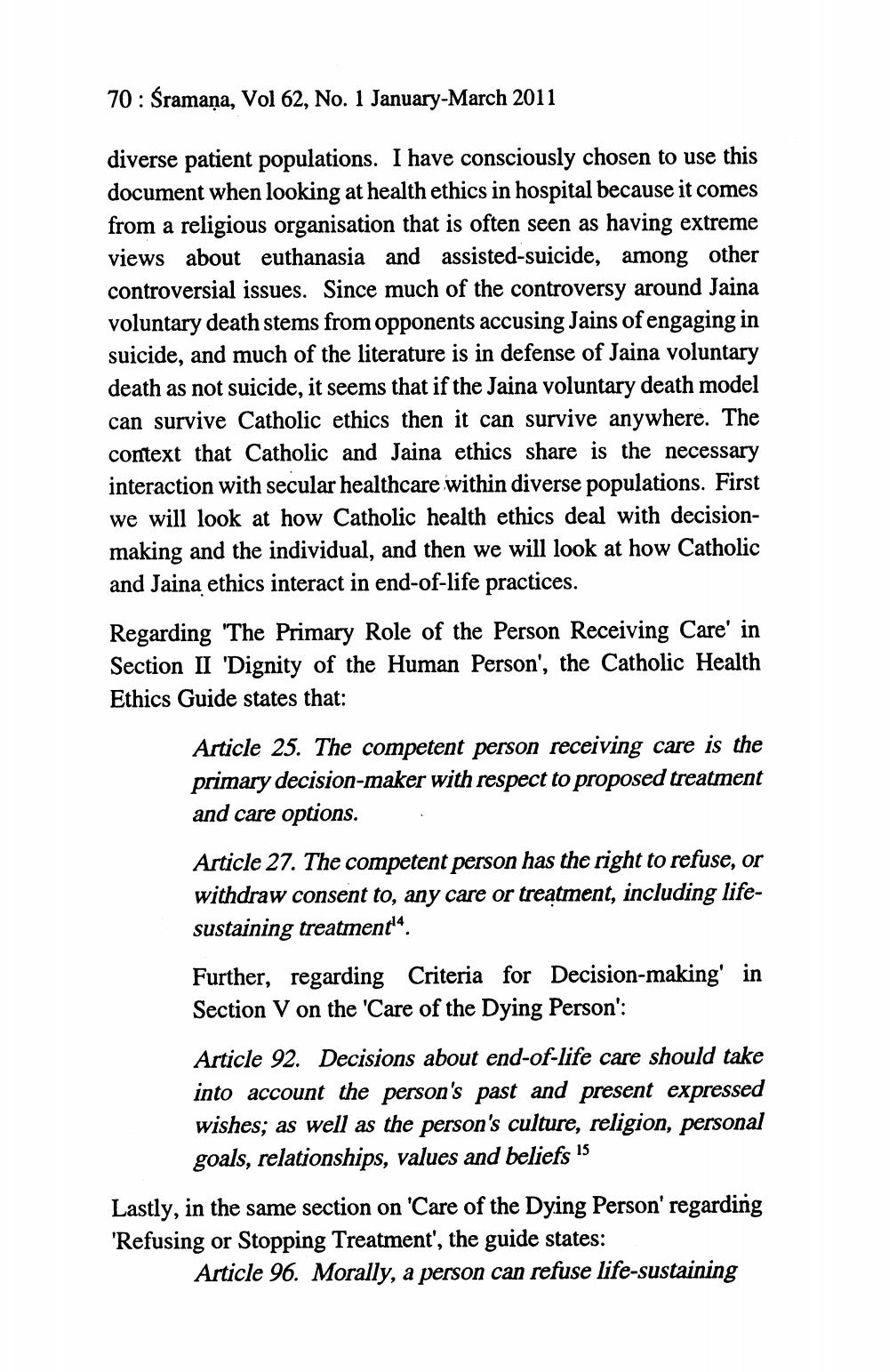________________
70: Šramaņa, Vol 62, No. 1 January-March 2011
diverse patient populations. I have consciously chosen to use this document when looking at health ethics in hospital because it comes from a religious organisation that is often seen as having extreme views about euthanasia and assisted-suicide, among other controversial issues. Since much of the controversy around Jaina voluntary death stems from opponents accusing Jains of engaging in suicide, and much of the literature is in defense of Jaina voluntary death as not suicide, it seems that if the Jaina voluntary death model can survive Catholic ethics then it can survive anywhere. The context that Catholic and Jaina ethics share is the necessary interaction with secular healthcare within diverse populations. First we will look at how Catholic health ethics deal with decisionmaking and the individual, and then we will look at how Catholic and Jaina ethics interact in end-of-life practices.
Regarding 'The Primary Role of the Person Receiving Care' in Section II 'Dignity of the Human Person', the Catholic Health Ethics Guide states that:
Article 25. The competent person receiving care is the primary decision-maker with respect to proposed treatment and care options. Article 27. The competent person has the right to refuse, or withdraw consent to, any care or treatment, including lifesustaining treatment'.
Further, regarding Criteria for Decision-making' in Section V on the 'Care of the Dying Person':
Article 92. Decisions about end-of-life care should take into account the person's past and present expressed wishes; as well as the person's culture, religion, personal
goals, relationships, values and beliefs 15 Lastly, in the same section on 'Care of the Dying Person' regarding 'Refusing or Stopping Treatment', the guide states:
Article 96. Morally, a person can refuse life-sustaining




